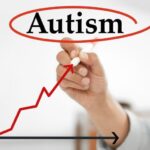- The dangers of toxic cleaning products and their impact on health and the environment.
- Alternative, safe cleaning solutions and their benefits.
- Understanding the chemicals in everyday cleaners and their effects.
- Dr. Gundry’s insights and recommendations for safer cleaning practices.
- Actionable steps to transition from harmful products to non-toxic options.
Understanding the hazards of toxic cleaning products is crucial for maintaining good health and protecting the environment. Many conventional cleaning agents contain chemicals that can lead to a range of health issues, including respiratory problems, skin irritation, and even long-term conditions like cancer. Additionally, their environmental impact is significant, contributing to pollution and harm to wildlife.
Toxic Ingredients and Their Impacts
Most mainstream cleaning products contain a concoction of harmful substances. For instance, ammonia, commonly found in glass cleaners, can irritate the skin, eyes, and respiratory system. Bleach, a common household disinfectant, when mixed with ammonia or acid-based cleaners, releases toxic chloramine gas. This can cause watery eyes, coughing, and throat irritation.
Volatile organic compounds (VOCs) are another concern. Found in many air fresheners and disinfectants, VOCs can cause headaches, dizziness, and liver, kidney, or central nervous system damage. Long-term exposure may even lead to cancer. These chemicals also contribute to indoor air pollution, which can be several times worse than outdoor pollution.
The Environmental Toll of Conventional Cleaners
Beyond personal health, the environmental consequences of toxic cleaning products are severe. When washed down the drain, these chemicals can enter waterways, affecting aquatic life and ecosystems. For instance, phosphates in dishwashing detergents contribute to algae blooms, depleting oxygen in water bodies and harming fish populations.
Moreover, certain chemicals can bioaccumulate, building up in organisms over time. This can lead to magnified effects up the food chain, impacting not only wildlife but potentially humans who consume seafood.
Alternatives to Toxic Cleaning Products
In response to these hazards, many people are turning to safer, eco-friendly alternatives. Products labeled as "green" or "natural" often use biodegradable ingredients that minimize environmental impact while remaining effective. For example, vinegar and baking soda can be powerful cleaners, removing grease and eliminating odors without harmful side effects.
Dr. Gundry emphasizes the importance of reading labels and understanding what these so-called "natural" products contain. Some might still harbor sneaky toxic ingredients disguised under ambiguous terms like "fragrance," which can include phthalates harmful to endocrine function.
Healthier Practices for a Safer Home
Adopting non-toxic cleaning practices can lead to a healthier home environment. Dr. Gundry’s podcast suggests a few simple steps to start. First, dispose of any existing toxic cleaners responsibly—never down the drain. Look for local disposal sites that handle hazardous waste.
Next, consider making your own cleaning solutions. A simple mixture of water, vinegar, and essential oils can serve as an effective all-purpose cleaner. This DIY approach not only ensures safety but can also be cost-effective.
Making the Transition
Transitioning to non-toxic products might seem daunting, but the benefits far outweigh the challenges. Start by gradually replacing conventional products as they run out. Focus on high-impact items like surface cleaners and laundry detergents first.
Pay close attention to reputable eco-certifications when purchasing new products. Certification seals can provide assurance that a product is free from harmful chemicals.
Conclusion
Rethinking cleaning habits is a significant step toward improved health and environmental responsibility. By eliminating toxic cleaning products and adopting safer alternatives, individuals can contribute positively to their own well-being and the planet. Dr. Gundry’s insights underscore the importance of informed choices in this crucial area.
*****
Source Description
Toxic cleaning products, harmful household chemicals, endocrine disruptors, and dangerous cleaning supplies could be damaging your gut, lungs, hormones, and immune system — without you even knowing it.
In this episode of the Dr. Gundry Podcast, Dr. Steven Gundry exposes 10 toxic household cleaning products hiding in plain sight that may be sabotaging your health. From bleach and air fresheners to antibacterial sprays and drain cleaners, these seemingly harmless items are actually packed with hormone-disrupting chemicals, respiratory irritants, and gut-harming toxins. 🧪❌
But don’t worry — Dr. Gundry also shares science-backed, non-toxic alternatives that are safe, affordable, and easy to use. Learn how to protect your body, balance your hormones, and detox your home the right way with simple swaps that can improve your health in just 3–7 days.
✅ Perfect for anyone interested in gut health, clean living, natural cleaning solutions, low-tox home hacks, and long-term wellness.
This episode is sponsored by Sunlighten. Visit https://www.sunlighten.com to learn more and get exclusive savings — up to $1,400 off!
00:00 – Intro: Are Cleaning Products Making You Sick?
00:46 – Why Bleach Is a Hidden Health Risk
03:39 – Toxic Laundry Detergents & Dryer Sheets
05:23 – Antibacterial Wipes & Safer Cleaning Methods
07:20 – Deadly Drain Cleaners & Natural Alternatives
09:37 – Toxic Toilet Bowl Cleaners
🔍 What You’ll Learn
Top 10 toxic cleaning products to avoid
Natural cleaning alternatives that work
How endocrine disruptors affect your hormones
Tips to reduce toxic load at home
Why fragrance-free is safer for your health
Detoxification using sauna therapy
Science-backed swaps for safer cleaning
#ToxicCleaners #DrGundry #GutHealth #HormoneHealth #NonToxicHome #CleanLiving #EndocrineDisruptors #NaturalCleaning #HomeDetox #WellnessTips #HealthyHome

